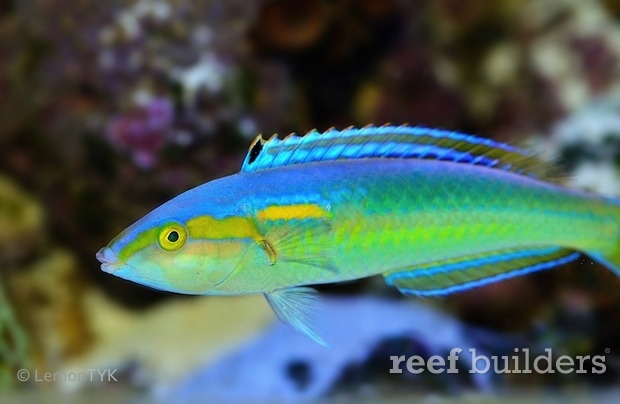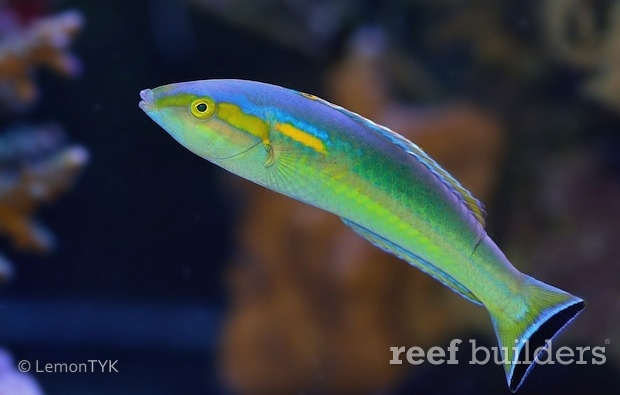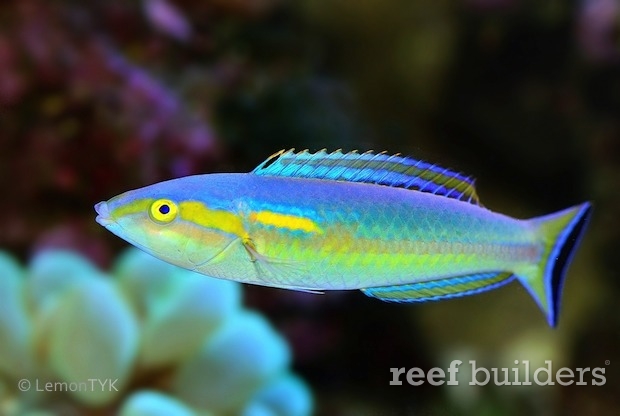Pseudojuloides is a genus of touchy labrids that are aptly named pencil wrasses for their slender figure. The genus boasts a sizeable number of mostly colourful sexually dichromatic species, of which only a small sampling is offered to the aquarium trade. We’ve covered on a few rare ones in the past and today we’re fleetingly covering another seldom seen example of this exquisite group – Pseudojuloides xanthomos.

Pseudojuloides xanthomos is a Mauritian endemic described from a single male specimen in Pointe aux Canonniers. The species bears resemblance and is also most closely related to P. cerasinus, as well as another undescribed species currently assigned with the temporary name of Pseudojuloides sp. 1. However unlike the latter two, P. xanthomos can be differentiated by having its equatorial yellow belt cut short to just behind its gill cover. The females are indistinguishable superficially, and are coloured a light salmon pink for all three species.
Known only from Mauritius, P. xanthomos very rarely makes its appearance in the trade, and the number of specimens in total captured for the ornamental industry is probably less than a dozen. However with specially targeted Mauritian imports, this species is becoming less of an enigma and shares a similar fate to Paracheilinus piscilineatus and Acanthurus polyzona; two rare endemics that were also once unobtainable once upon a time.

Tetsuo Otake and other japanese hobbyists report the comparative ease of husbandry with this species compared to the other members of the genus. Why yes, the Pseudojuloides wrasses are notorious for their touchiness and many do not acclimate well to captivity, often refusing to eat or arriving with bruised mouth parts. We share the same experience with Tetsuo, and report that our pair is doing excellently for now, and has taken to eating frozen food on day two post arrival.

If you know a store or wholesaler with regular imports of Mauritian fishes, chances are you’re likely to stumble upon P. xanthomos. This once very rare fish is now making a fairly regular appearance. Dejong Marinelife as well as a few shops in Japan often receive one or two specimens for every Mauritian import. The greenish-blue body coloration and the short yellow stripe is certainly eye catching. Enjoy a short video of our pair below.



